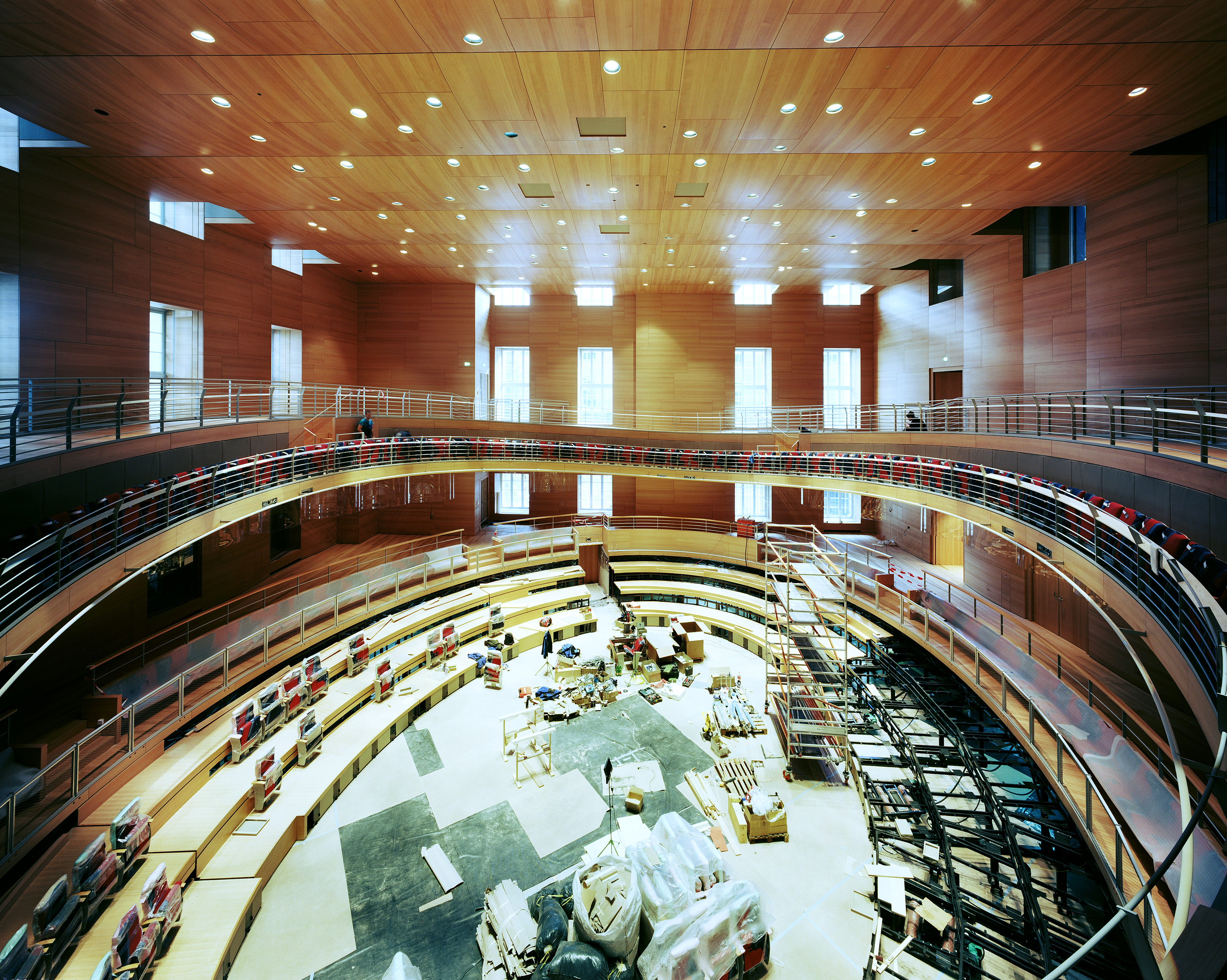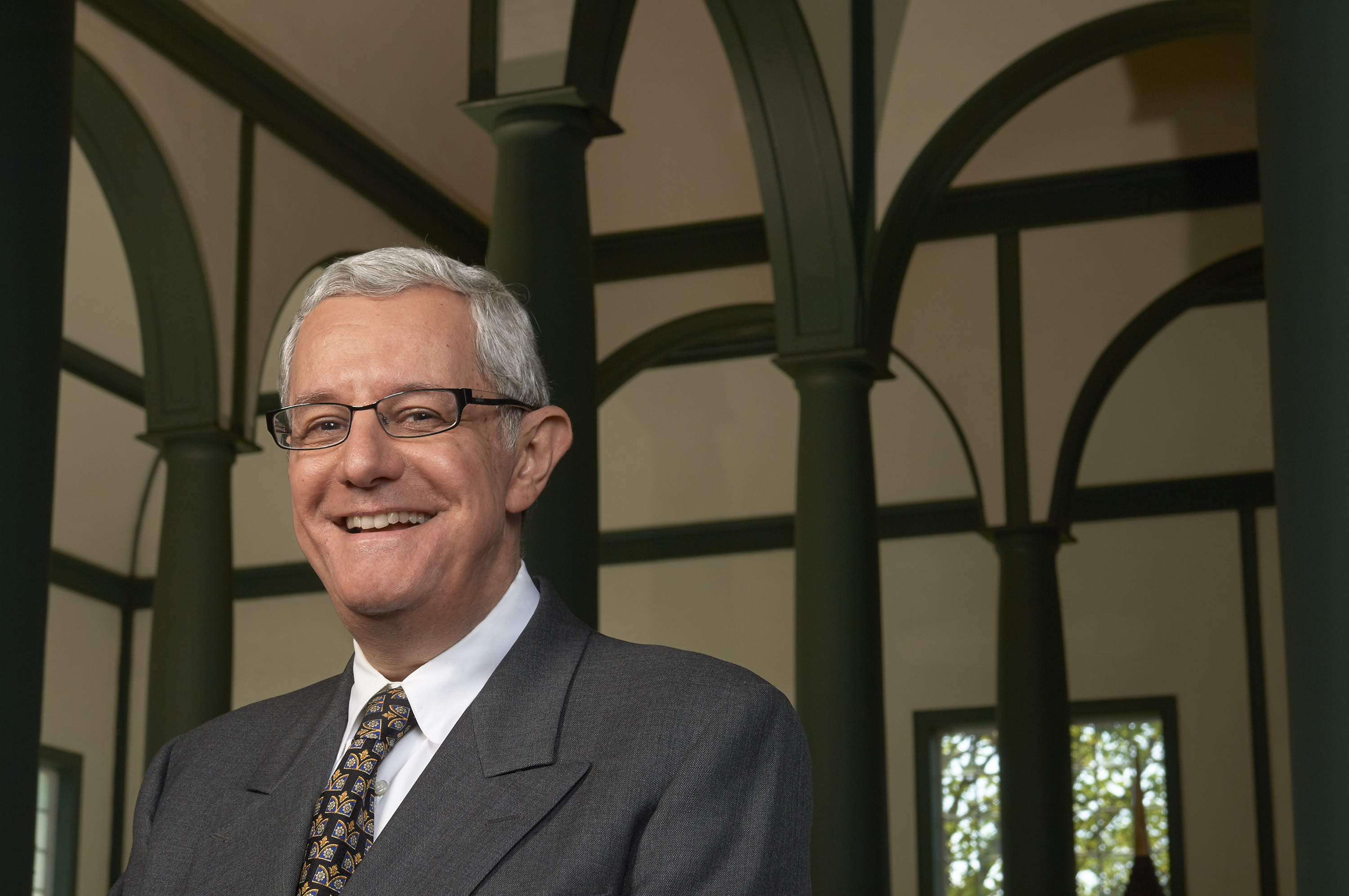
by Stephen Cera
I recently returned from a 12-day musical journey to three European cities: Frankfurt, Vienna and Berlin. It began with a visit to Frankfurt, Germany, to hear my young friend, tenor Theo Lebow, sing the title role in Stravinsky’s opera The Rake’s Progress with the Frankfurt Opera (…his professional home since last Fall.) Theo, an American, is the son of one of my dearest friends, Roger Lebow…we met in graduate school at the University of Southern California School of Music back in the days when neckties were wide and trousers were flared. Roger and Wendy, Theo’s mom, came to Frankfurt as well to hear Theo sing the Stravinsky opera on his birthday.
He gave a beautiful performance. The part of Tom Rakewell is well-suited to his qualities as a vocal artist as well as stage actor. (The opera itself is one of the less-appreciated gems of the post-World War II repertoire.) The cast was uniformly excellent, as was the orchestra, though the production wasn’t entirely to my taste. The English libretto, by W..H. Auden and Chester Kallman, presents a formidable challenge to a cast that must make each word not only intelligible, but meaningful to an audience whose first language is German. Conductor Tito Ceccherini maintained good balances and clear rhythms between stage and pit. The results were impressive.
Frankfurt is a lovely and civilized city, built on a human scale — the sort of place where one can walk peacefully for hours without worrying much about traffic or excessive noise.
I took the overnight train to Vienna, my first trip ever to the Imperial City, and was enchanted by its architectural beauty, rich history and culture steeped in classical music. Hollywood has its Walk of Fame; Vienna embeds in its sidewalks such names such as Bernstein, Karajan, and Böhm. My guide in exploring its splendors was pianist Claus-Christian Schuster, formerly of the Vienna Schubert Trio and Altenberg Trio Wien. Christian knows the history of Vienna backwards and forwards, including the names of emperors, empresses, and archdukes, and who followed whom. He also knows its musical history to an encyclopedic degree, and pointed out various houses in which Mozart lived; others where Mozart premiered this or that masterpiece; where Beethoven lived and died, Brahms also … even where Schubert went for coffee. We took the tram to two Vienna cemeteries: St. Marx, where Mozart rests in a commoner’s grave (his tomb indicates that his remains lie “within 50 meters” of the site), then to the Vienna Central Cemetery, where Beethoven, Schubert, Brahms and other immortals lie. (Mahler is buried in the suburb of Grinzing, and I plan to visit his grave on my next trip to Vienna.)
Thanks to another close friend, conductor Alexis Hauser (originally from Vienna, now resident in Montreal, where he inspires the McGill Symphony Orchestra to professional-level excellence), I had a ticket to hear the Vienna Philharmonic Orchestra in its home, the fabled Musikvereinsaal. Hearing this great orchestra there, led by conductor Adam Fischer, was an indelible experience for reasons both musical and acoustical. Having heard the Vienna Philharmonic on prior occasions – at the Kennedy Center in Washington, in London, and in Toronto – I was astonished at the quality and blend of sound in the Musikvereinsaal, which revealed subtleties of timbre I hadn’t imagined. Highlight was the Mozart “Prague” Symphony, K. 504, which Fischer led with impeccable style and the joy that the finest Mozart conductors conjure.
After another overnight on the train, I reached my final stop, Berlin – a city where I had stayed a number of times before. This year again, I came for the Festtage. Since 1996, it has been Daniel Barenboim’s annual Spring music festival that showcases the forces of the Berlin Staatsoper and Staatskapelle orchestra, which he serves as Music Director for Life. I attended four events at the Festtage this year, including Wagner’s Parsifal in the Schiller-Theater, the Staatsoper’s temporary home on Bismarckstrasse while extensive renovation work is being done in the old Staatsoper on Unter den Linden. (At the same hour, a few blocks west on Bismarckstrasse, the Deutsches Oper was presenting Wagner’s Ring cycle. In what other city would two major Wagner productions of international quality unfold simultaneously on the same street…?)
Though the Schiller-Theater is a legitimate theater, not an opera house or concert venue, it projects both instrumental and vocal sounds clearly, even prominently. The musical performance led by Barenboim was ravishing, though I had reservations about Dmitri Tcherniakov’s controversial design and stage direction (the Flower-Maidens in Act II were young girls whose hips swayed to hula hoops when they weren’t skipping rope or tossing balls at each other in the domain of Klingsor, here depicted as a genuine pervert.) Andreas Schager, in the title role, summoned trumpet-like Heldentenor tones in a theater where about 40% percent less sound might have sufficed. (In other theaters where I’ve heard him sing Wagner, Schager’s sound projected more comfortably.)
The Philharmonie concert hall near Potsdamer-Platz was the site of the other performances I attended: two by the Staatskapelle, conducted by Barenboim (one with Anne-Sophie Mutter the soloist in Beethoven’s Violin Concerto, the other with pianist Radu Lupu as soloist in Beethoven’s Emperor Concerto). Those programs also contained, respectively, music by Takemitsu; Debussy’s La Mer; Berg’s Three Pieces for Orchestra, Opus 6; Schoenberg’s Five Pieces for Orchestra, Opus 16, and Brahms’s Variations on a Theme by Haydn, Opus 56a. In La Mer, the orchestral sound was Germanic, somewhat heavier and darker than one usually hears in this music, but no less convincing. The Berg, Schoenberg and Brahms were superbly done. I don’t believe I had previously heard a live performance of either the Berg or Schoenberg; here both works benefitted from a vast range of dynamics and shadings, precisely articulated. The sonic impact of both is well beyond what can be gleaned from a sound recording, even disregarding such aspects as the visual effect of the mighty hammer-blow at the end of the Berg work, which recalls the Finale of Mahler’s Sixth Symphony. Lupu’s rendition of the Emperor Concerto’s slow movement floated phrases of a rare inwardness and poetry, still a hallmark of this artist.
Yet the most memorable musical event of my Berlin visit came at the end: a two-piano recital by a pair of keyboard giants now in their 70s: the legendary Martha Argerich and her fellow native-Argentinian, Barenboim himself. Exuding respect and affection for each another, and for their public, they offered a program designed to display both musical depth and instrumental mastery. In the opening work, Mozart’s Sonata in F for piano four hands, K. 497, each phrase sang and details were shaped lovingly, though some tempos may have been a bit brisk to permit everything to register clearly in the resonant acoustic.
Next came Brahms’s arrangement for two pianos of his Variations on a Theme by Haydn, Opus 56b: not a strict transcription but a re-conception of the orchestral version we had heard just days before. Barenboim’s detailed knowledge of the score paid ample rewards, yielding a fresh re-thinking of the familiar music. The work was delivered with naturalness and without affectation.
After intermission came two Liszt works: the Concerto Pathétique and, to close, a phenomenal account of Liszt’s mighty Réminiscences de Don Juan, a pyrotechnical paraphrase / fantasy on Mozart’s Don Giovanni. Busoni, the great pianist and composer who died nearly a century ago, wrote that the piece carries “an almost symbolic significance as the highest point of pianism.” It is most often heard played by a solo pianist, but there really are too many notes for only 10 fingers.. 20 fingers can deliver the ferociously complex textures more clearly, and project greater detail.
This performance was a window into the artistry of two great pianists, who communicated Liszt’s paraphrase with diabolical panache that still never violated Mozart’s implicit elegance and poise.. and with such compelling grasp of Liszt’s design that the piece built inexorably, wave upon wave of sound, to an overwhelming conclusion. The audience in the Philharmonie rose to its feet, with rhythmic applause and shouts of “Bravo” echoing through the sustained ovation. They were rewarded with three encores: the first two by Mozart, the last Debussy’s haunting Prelude to the Afternoon of a Faun in the composer’s own arrangement. It was surpassingly beautiful, a perfect teaser for the two pianists’ mostly-Debussy program slated for next year.
How Barenboim maintains such a schedule of performances and rehearsals throughout the Festtage – while delivering performances of such quality – continues to be a source of wonderment. Radu Lupu calls it a “miracle.” He has become a cultural force as well. With the American-Palestinian literary scholar, the late Edward Said, he founded the West-Eastern Divan Orchestra in Weimar, Germany, in 1999, with a mission to bring together young Arab and Israeli musicians. Newly created in the spirit of the West-Eastern Divan Orchestra, the Barenboim-Said Akademie, which opened in Berlin last December, seeks to unite talented young musicians from the Middle East, North Africa, and around the world to study at the center of an historic city. Inspired equally by its namesakes, the Akademie’s curriculum integrates intensive music performance studies with a grounding in the humanities.
The Akademie houses a remarkable small concert hall, designed by architect Frank Gehry and acoustician Yasuhisa Toyota (both of whom donated their services) and is named after the late composer and conductor, Pierre Boulez (see above photo). It plugs what had been a gap in Berlin’s concert venues, by creating a flexible setting with superior sound quality for chamber music and song recitals (and much else, from solo instruments to large orchestras.) The Pierre Boulez Saal is a place where the ideal of the Barenboim-Said Akademie — education through music — finds resonance. The Pierre Boulez Saal is an essential part of the Akademie, serving the approx. 100 students (most from the Middle East) as a space to develop themselves further, under the guidance of professional artists and mentors, through performance and study. In addition to the new Pierre Boulez Saal, the Akademie building near the Staatsoper includes 21 rehearsal rooms, an auditorium, library, offices, classrooms and other ancillary spaces that fill an area of 6,500 square meters.
I had the pleasure of touring the Pierre Boulez Saal while in Berlin. No concerts were taking place there during the Festtage, but the tour of the “360º Salle Modulable,” inspired by Boulez himself, provided a vivid sense of its acoustical properties and visual perspectives, whetting my desire to return to Berlin to hear music performed there. The reviews have been excellent.




2 Comments
Apr 23, 2017 at 9:53 PM /
This is incredible!!! We had dinner with Ann and Don on Saturday and she just sent this along. What an amazing journey. The McGill Orchestra must be inspirational. The Schulich school (where a number of my colleagues teach) is amazing. I love Berlin and wish I could spend more time there. We have several close friends who are ex pats (and a couple who live in the US but bought apts in the city.
Hope we can catch up with you soon.
Apr 26, 2017 at 11:11 AM /
I am no expert in search so can’t tell you how your blog came to my attention but I read it entirely and was overwhelmed by the experiences and details that I had to say how much I appreciate you sharing your story of your recent visit to our city. The culture of music is so dramatically changing that you can’t really find any good writing about classical music anymore, change is good but not appreciating the art for what it is, is not. Classical music is pure, you don’t just connect a computer to generate some sound effects over repetitive lyrics and call it your art, you really need to compose.
Wahre worte mein freund